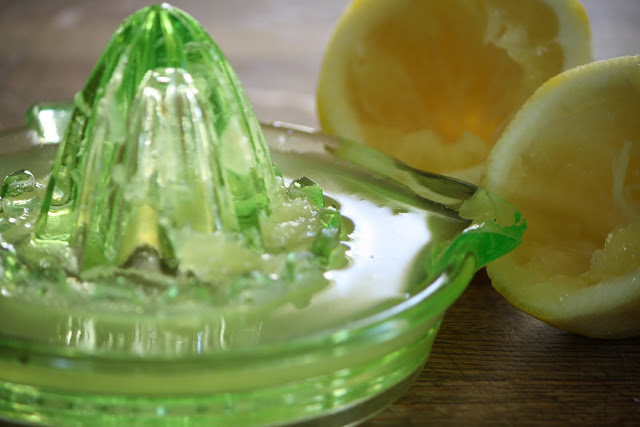 My husband and I just celebrated our 20th wedding anniversary. Wait. What? Somehow 20 years sounds and feels so solid. We've lived a whole lot of life, easy and hard, and we're still here -- together. So, this is the kind of man I'm married to: He gets home from work, tells me to hop in his truck because we're taking a ride. Never one to turn down a mystery invitation, I eagerly oblige. We pull up in front of Sears, and I'm thinking "woowhoooo" we're shopping for a new weed whacker. As we're passing by the stoves, he nonchalantly asks me which one I like best. I point to my fav, and next thing I know, he's hailed the appliance dude, whipped out a wad of cash (he's a plumber and scrap copper is at an all time high) and the stove is mine. Just like that. I'm speechless, psyched and spoiled. I love you, Liam, you're the man. And you you're mine.
My husband and I just celebrated our 20th wedding anniversary. Wait. What? Somehow 20 years sounds and feels so solid. We've lived a whole lot of life, easy and hard, and we're still here -- together. So, this is the kind of man I'm married to: He gets home from work, tells me to hop in his truck because we're taking a ride. Never one to turn down a mystery invitation, I eagerly oblige. We pull up in front of Sears, and I'm thinking "woowhoooo" we're shopping for a new weed whacker. As we're passing by the stoves, he nonchalantly asks me which one I like best. I point to my fav, and next thing I know, he's hailed the appliance dude, whipped out a wad of cash (he's a plumber and scrap copper is at an all time high) and the stove is mine. Just like that. I'm speechless, psyched and spoiled. I love you, Liam, you're the man. And you you're mine.Now, a quick word about this recipe. I'm pretty sure that these Prajitura cu Lamie (Lemon Bars) are a modern day spin on an old school Romanian classic for a more traditional lemon loaf. If you're kind enough to be reading this, and you're Romanian, I'd love to know what you think. I made a point to work from a Romanian website, but when I cross-referenced the recipe, I found many more that were more cake/loaf like. Regardless, this recipe is sublime. A shortbread crust and lemon curd-like topping tastes like summer in a pan. Sweet, tart and beautiful, it's the perfect treat for a warm June night no matter where you live.
Located at the cross roads of central and south eastern Europe, Romania sits on the lower Danube within and outside of the Carpathian arch, bordering the Black Sea. Romania shares its borders with Hungary, Serbia, Ukraine, Moldova and Bulgaria. Romania emerged when the principalities of Moldavia and Wallachia were united. By the end of WWII, many north eastern areas of Romanian territories were occupied by the Soviet Union, but with the fall of the iron curtain and the 1989 Revolution, Romania began transitioning toward a democracy and capitalist market. In 2007, Romania joined the European Union.
Culinary traditions in Romania have been influenced by Ottoman, German, Serbian and Hungarian cuisine. Soups, stews, meat and fish dishes are often given an extra twang and soured using lemon juice, sauerkraut juice, vinegar and fermented wheat. Plum brandy is a popular alcoholic beverage (which I'd like to try to make). Stuffed cabbage rolls, sauerkraut, mama liga (like polenta) all topped with sour cream are commonly served. Sausages and pork are the preferred meat, but beef, chicken and lamb are eaten as well. Vegetables include, but are not limited to: peppers, eggplant, kohlrabi, cabbage, mushrooms and leaks.
Crust
Topping
Prajitura cu Lamaie (Lemon Bars) - Adapated from romanianfoodrecipes.com
Crust
1-1/2 four
1/3 cup confectioner's sugar
1/8 tsp. salt
3/4 cup butter
Topping
3 eggs
1/4 cup fresh squeezed lemon juice (about 1-1/2 large lemons)
1-1/2 cups sugar
3 Tbsp. four
Preheat oven to 350 F and butter a 9x9 square pan.
To prepare the crust, mix four, confectioner's sugar and salt together.
Cut butter into the dry ingredients using two knives or a pastry blender.
Press mixture into prepared pan to form the crust.
Bake 10-15 minutes until the edges are golden brown. Remove from oven and set aside (do not turn oven off)
To make the topping, beat the eggs and lemon juices in a small bowl.
In a separate bowl, sift together the sugar and flour.
Gradually add the four and sugar mixture to the eggs, mixing well. Stir or whisk until smooth.
Pour the filling over the crust and bake 15-20 minutes until set and a toothpick inserted in the middle comes out clean.
Cool, then sprinkle with confectioner's sugar if desired and cut into squares. Store in refrigerator.
(C) 2010-2011, What's Cooking in Your World?/ Sarah Commerford/All Rights Reserved























































